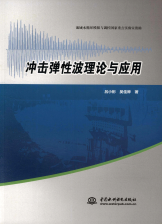
主要责任者: 吕小彬,吴佳晔
责任方式: 著
出版者: 中国水利水电出版社
出版地: 北京
字数: 480 千字
页码: 1-316
开本: 16
中图分类号: TV642
语种:中
定价:99.00
出版时间:2016-06
丛书多卷书否:否
书目简介:本册工具书共收录198条词条。
被引频次:75
| 词条 | 冲击弹性波理论与应用 |
| 类别 | 中文百科知识 |
| 释义 |  主要责任者: 吕小彬,吴佳晔 责任方式: 著 出版者: 中国水利水电出版社 出版地: 北京 字数: 480 千字 页码: 1-316 开本: 16 中图分类号: TV642 语种:中 定价:99.00 出版时间:2016-06 丛书多卷书否:否 书目简介:本册工具书共收录198条词条。 被引频次:75 |
| 随便看 |
开放百科全书收录579518条英语、德语、日语等多语种百科知识,基本涵盖了大多数领域的百科知识,是一部内容自由、开放的电子版国际百科全书。